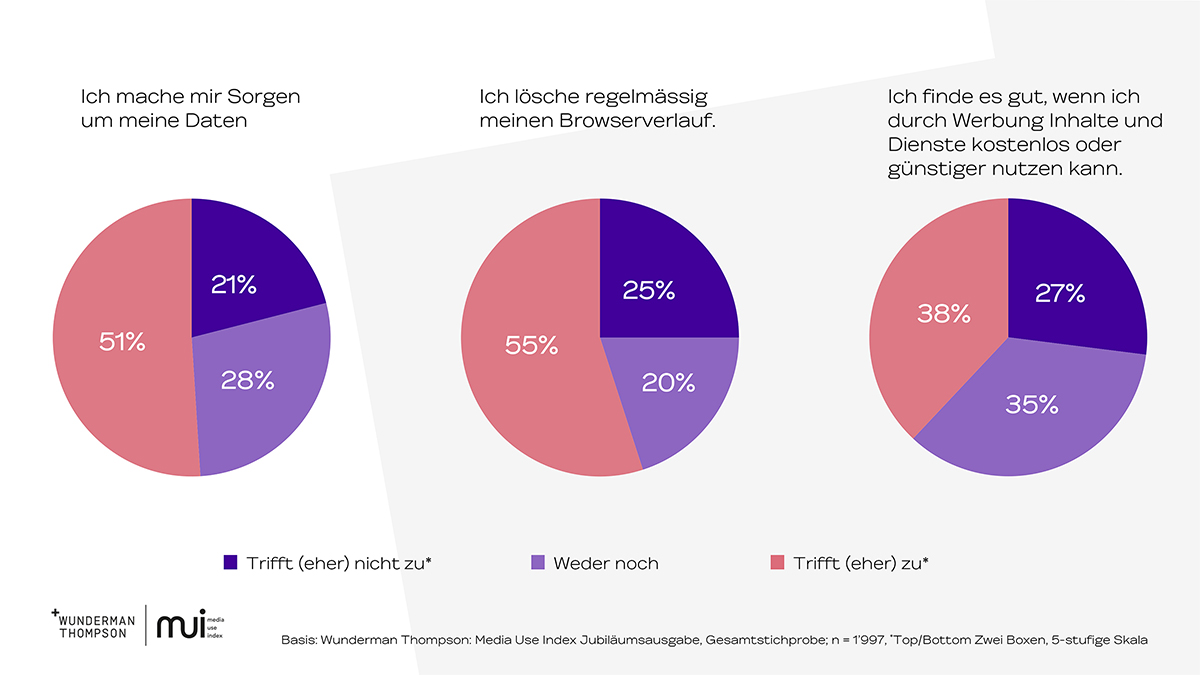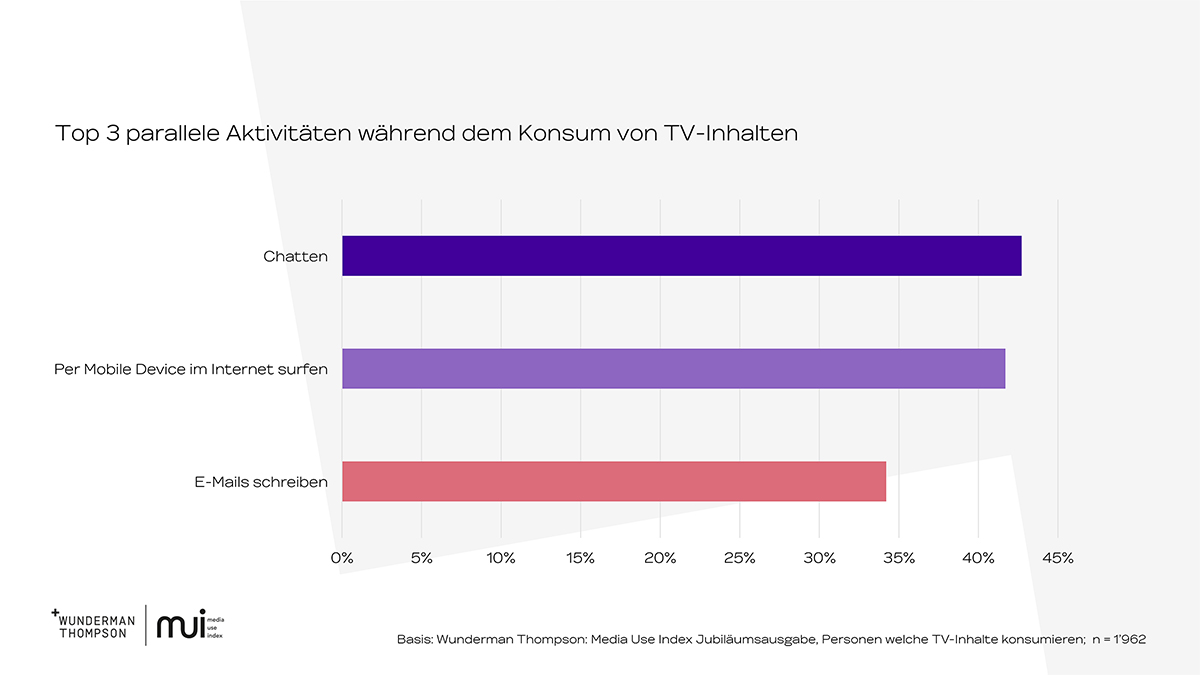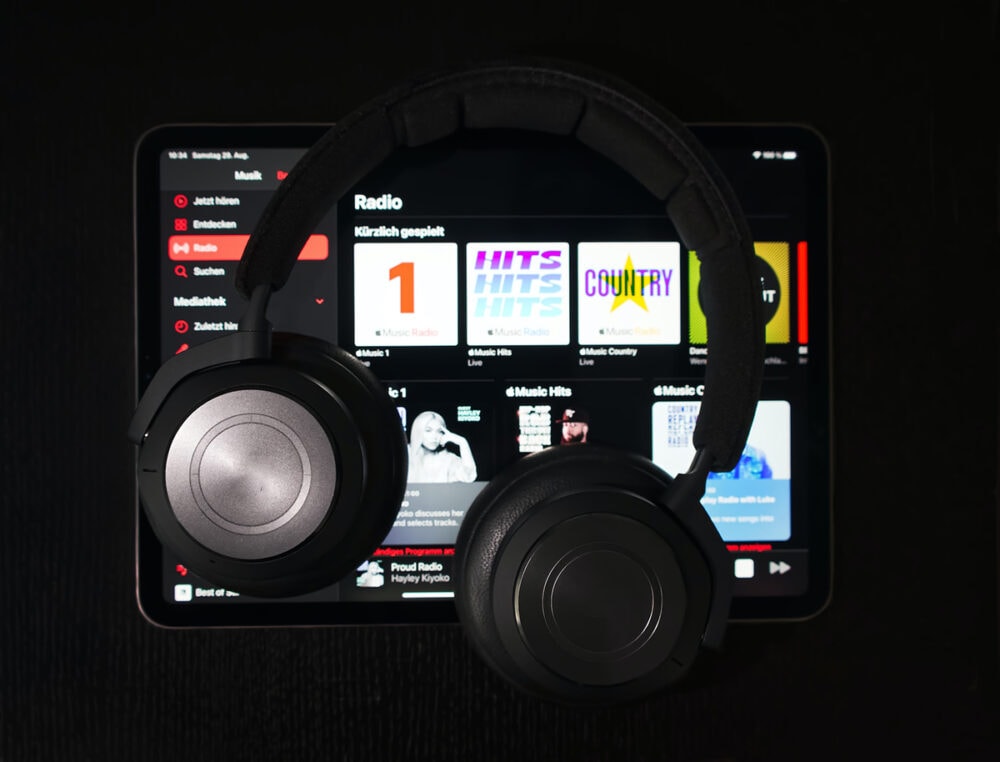Half of the Swiss are concerned about their data
Wunderman Thompson Switzerland publishes the 10th anniversary edition of the Media Use Index. The study provides insight into the current media use and information behavior of the Swiss, highlights the latest trends and explains the fundamental changes of the last decade.
Everyone is talking about data protection, influencers and dwindling attention, but how relevant are these topics really for the Swiss population? By means of a representative online survey, around 2,000 people between the ages of 14 and 69 were asked about their media usage and information behavior. The study shows that half of the respondents are concerned about their data, influencers are more entertaining than classic media, and the smartphone has become an irresistible distraction.
Self-censorship on the Net for Fear of Data Misuse
Users are becoming aware of how valuable their data is. This influences their behavior online and fuels fears of data misuse. One in two people is worried about their data and one in five has not dared to Google something. In addition to self-censorship, security precautions are also increasingly being taken.
For example, 55 percent regularly delete their browsing history and every third person has taped off their laptop's camera. Nevertheless, more than a third of those surveyed welcome ad-financed content. If data is given out, a service in return is expected.

Vive la Voice
Voice assistants are in vogue, but there are still big differences in usage: Although every second person who owns a smartphone also uses the voice assistant, only 5 percent also use it daily. In addition, use in French-speaking Switzerland is almost twice as high at 40 percent as in German-speaking Switzerland at 22 percent.

Influencers cannot be explained away
Almost every young person (95 percent) in Switzerland follows at least one influencer, with an average of 65 percent doing so across all age groups. Musicians are the most popular influencers, from young to old. While female followers predominate among influencers from the areas of culture and lifestyle, male followers are more strongly represented among athletes. Compared to traditional media, the posts of influencers are perceived as more entertaining and inspiring. In addition, they offer different information.

The smartphone is all about hyper-interaction
The Internet is Switzerland's most important medium and is now used more frequently via smartphone than on a PC. However, the smartphone does not make us more antisocial. On the contrary: It is primarily used for communication via messages (especially WhatsApp) and email. And as a constant companion, every second person has his or her smartphone at hand even while sleeping.

The "classics" have not had their day
Online consumption of news primarily takes place directly on the Internet portal of a particular media title. Among 14- to 24-year-olds, however, this also happens to the same extent via social media.
Beacons of the Swiss media landscape regarding trust, such as SRF and NZZ, new challenger media - for example, have had to be Watson or Instagram - are ceding terrain. In times of crisis such as the coronavirus pandemic, however, the greatest trust is placed in classic titles across all age groups.

Second-Screen Nation
While we watch movies and series, we are also increasingly on the phone. Almost half of those surveyed chat on the side or surf the Internet via smartphone. However, gender seems to play a role here: Women multitask more often. They achieve significantly higher scores than men for almost all parallel activities. On the other hand, a quarter of men say they do not engage in any parallel activities while watching TV.









